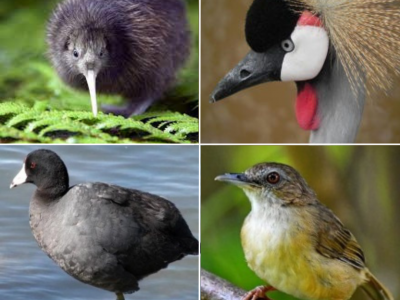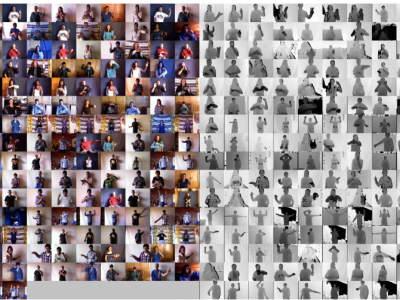Computer Vision
The dataset consists of a large collection of images of about 11,000 different species of birds, with a total of 5 million images. This dataset represents a valuable resource for researchers, conservationists, and bird enthusiasts alike, allowing for a more comprehensive understanding of the diversity and distribution of avian species around the world. The data could be used for a wide range of applications, including species identification, biodiversity monitoring, and ecological research.
- Categories:
 4917 Views
4917 ViewsAHT2D dataset is composed of Handwritten Arabic letters with diacritics. In this dataset, we have 28 letter classes according to the number of Arabic letters. Each class contains a multiple letter form. We have different letter images from different sources such as the internet, our writers, etc. The AHT2D dataset includes only isolated letters. In addition, this dataset contains different writing styles, orientations, colors, thicknesses, sizes, and backgrounds, which makes it a very large and rich dataset.
- Categories:
 819 Views
819 ViewsThis is the largest database of hyperspectral face images containing hyperspectral image cubes of 78 subjects imaged in multiple sessions. The data was captured with the CRI's VariSpec LCTF (Liquid Crystal Tunable Filter) integrated with a Photon Focus machine vision camera. There are 33 spectral bands comering the 400 - 720nm range with a 10nm step. The noise level in the dataset is relatively lower because we adapted the camera exposure time to the transmittance of the filter illumination intensity as well as CCD sensitivity in each band.
- Categories:
 587 Views
587 ViewsThis dataset was collected in our lab using Kinect to emphasize three points: (1) Larger number of human activities. (2) Each subject performed all actions in a continuous manner with no breaks or pauses. Therefore, the start and end positions of body for the same actions are different. (3) Each subject performed the same actions four times while imaged from four different views: front view, left and right side views, and top view.
- Categories:
 1347 Views
1347 ViewsSWAN is a large-scale outdoor point cloud semantic segmentation, instance segmentation and object detection dataset. The dataset is targeted explicitly at the challenging urban environment, which aligns well with the needs of the intelligent transportation systems. The data is collected in the Central Business District (CBD) of Perth city in Australia, covering nearly 150km. It additionally used specialized equipment (portable trolley) to capture scenes of no-through roads and narrow streets.
- Categories:
 667 Views
667 ViewsSWAN is a Large-Scale Outdoor Point Cloud semantic segmentation dataset . The dataset is targeted explicitly at the challenging urban environment, which aligns well with the needs of the intelligent transportation systems. The data is collected in the Central Business District (CBD) of Perth city in Australia, covering nearly 150km. It additionally used specialized equipment (portable trolley) to capture scenes of no-through roads and narrow streets.
- Categories:
 122 Views
122 Views
69 whole slide images for early gastric cancer diagnosis, evaluating the proposed variational energy network (VENet).
- Categories:
 292 Views
292 Views
The self-collected 30000 pathological images for gland segmentation, including training images and annotations.
- Categories:
 429 Views
429 Views
—Image segmentation is challenging task in field of medical image processing. Magnetic resonance imaging is helpful to doctor for detection of human brain tumor within three sources of images (axil, corneal, sagittal). MR images are nosier and detection of brain tumor location as feature is more complicated.
- Categories:
 434 Views
434 Views



